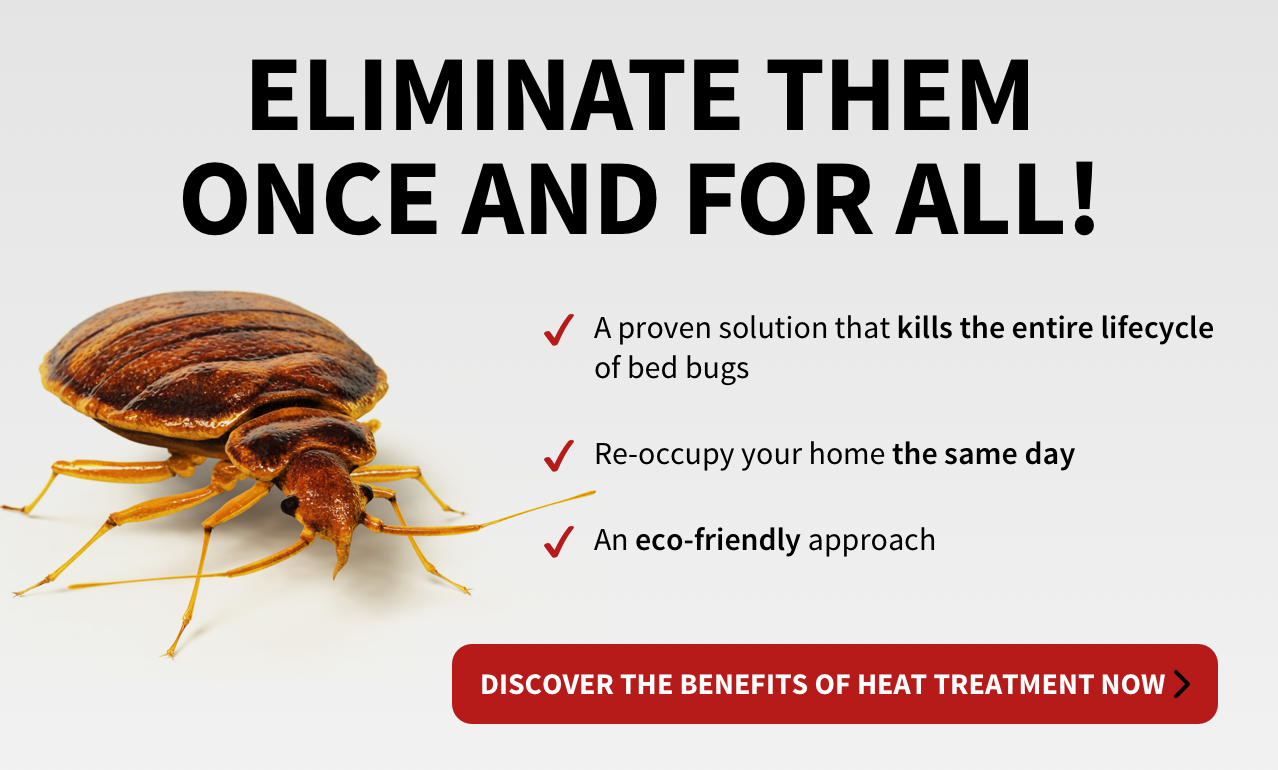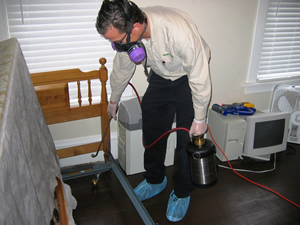Affordable Bed Bug Heat Treatment for Quick and Effective Results
Get Enlightened About the Kinds Of Parasite Control Techniques and Their Advantages for Home Owners
Recognizing the various parasite control techniques readily available to home owners is important for efficient pest administration. Homeowners who are knowledgeable can make critical selections that not only address parasite concerns but additionally enhance the total high quality of their living environment.
Chemical Pest Control Techniques
Chemical insect control approaches are a vital element of incorporated pest management techniques for home owners looking for effective options to pest problems. These methods include the application of chemical materials created to eliminate or prevent parasites that intimidate personal effects, health, and convenience. Usual chemicals utilized include insecticides, herbicides, rodenticides, and fungicides, each tailored to target certain insects.
The key benefit of chemical insect control is its rapid performance; many formulas give immediate results, decreasing pest populations significantly in a short time. In addition, developments in chemical formulations have actually led to items that are a lot more eco-friendly and have reduced toxicity degrees for non-target organisms when used appropriately.

Biological Pest Control Strategies
All-natural insect control methods have obtained importance as home owners seek safer and more sustainable choices to conventional chemical methods. Biological parasite control methods use natural predators, bloodsuckers, or pathogens to manage bug populations effectively. This approach is not only eco-friendly but also minimizes the danger of injury to non-target species, consisting of helpful bugs and wildlife.
One of the most usual organic control methods involves presenting all-natural predators right into the environment. For instance, ladybugs can be used to control aphid populations, while nematodes target soil-dwelling pests like grubs. Furthermore, parasitoids-- organisms that survive on or within a host-- can be utilized to control particular insect species by laying eggs inside them, eventually bring about their death.
Another technique is the use of biopesticides, which are originated from natural products such as germs, minerals, or plants (bed bug exterminator). These products can effectively target insects while posing very little risk to animals and human beings. Overall, biological parasite control techniques give property owners with an efficient ways of insect monitoring that lines up with environmental concepts, promoting a healthier living setting while reducing dependence on synthetic chemicals
Mechanical Bug Control Methods
Mechanical bug control methods encompass a range of methods that physically avoid or remove parasites without the usage of chemicals. These methods are especially advantageous for property owners looking for environmentally friendly options while making sure the safety of their space.
One typical approach is making use of obstacles, such as traps, displays, and webs, which stop pests from going into homes or certain areas. For circumstances, mounting home window displays can effectively keep insects out, while making use of physical obstacles around yards can discourage larger pests like bunnies or deer. In addition, mechanical traps made for rodents can capture and eliminate these exterminating companies near me bugs without the need for hazardous substances.
One more efficient method entails using vacuums and brooms to remove bugs straight from surfaces. Regular cleaning and upkeep can significantly reduce pest populations by eliminating food resources and hiding areas. Additionally, employing gadgets like ultrasonic pest repellents can discourage different pests via sound waves that are unpleasant to them however inaudible to human beings.
Cultural Insect Control Practices
Social insect control techniques concentrate on changing the setting and administration techniques to develop problems that are much less for pest infestations. These practices are fundamental in keeping a balanced ecological community and decreasing the reliance on chemical interventions. By altering agricultural practices, home owners can properly discourage pests while advertising plant health and wellness.
One usual strategy includes plant rotation, which disrupts the life cycles of insects by altering the sorts of plants expanded in a particular area (bed bug exterminator). This not just reduces pest populaces yet additionally enhances soil health. Furthermore, intercropping-- planting varied original site plants in proximity-- can confuse bugs and lower their capability to find their recommended host plants
Water management is another critical element of social practices. Correct watering techniques can protect against standing water, which acts as a reproduction ground for insects and other insects. Keeping cleanliness in and around the home, such as routinely removing particles and food waste, can considerably minimize bug attraction.
Incorporating these social techniques right into a comprehensive insect administration technique allows home owners to create a setting that naturally deters insects, thus improving the effectiveness of other control approaches while advertising lasting horticulture and landscape design.

Integrated Bug Management Approaches
Integrated Bug Administration (IPM) stands for an all natural method that incorporates numerous strategies to properly manage pest populations while decreasing ecological effect. This methodology integrates biological, cultural, physical, and chemical practices to attain lasting insect control. By analyzing pest populaces and their natural adversaries, IPM emphasizes tracking and recognizing pests prior to carrying out control measures.
One of the core concepts of IPM is using thresholds, which establish the degree of parasite task that necessitates treatment. This makes sure that therapies are used just when necessary, lowering the reliance on chemical pesticides. Biological control methods, such as introducing all-natural killers or parasites, operate in combination with cultural methods like crop turning and habitat adjustment to interrupt pest life cycles.
Additionally, IPM urges using least-toxic chemical options when intervention is required, prioritizing items that pose marginal danger to non-target organisms and the environment. For homeowners, adopting IPM approaches not only boosts the efficiency of insect management however likewise advertises a much healthier living setting, promoting biodiversity and lowering chemical exposure. Eventually, IPM encourages house owners to make informed choices that balance parasite control with environmental responsibility.
Conclusion
In final thought, comprehending this contact form the different insect control methods encourages property owners to make enlightened decisions concerning pest monitoring. Each method-- chemical, biological, mechanical, cultural, and integrated insect monitoring-- offers unique advantages that cater to different needs and preferences.
Comprehending the different insect control methods readily available to homeowners is vital for efficient bug monitoring.Chemical pest control techniques are an important part of incorporated parasite management approaches for property owners seeking efficient options to pest infestations. In general, biological pest control methods offer homeowners with a reliable ways of pest administration that lines up with ecological principles, promoting a much healthier living atmosphere while lowering reliance on artificial chemicals.
Social parasite control practices concentrate on changing the setting and monitoring strategies to develop problems that are less conducive to pest invasions.In final thought, recognizing the numerous pest control methods equips homeowners to make enlightened decisions concerning pest monitoring.